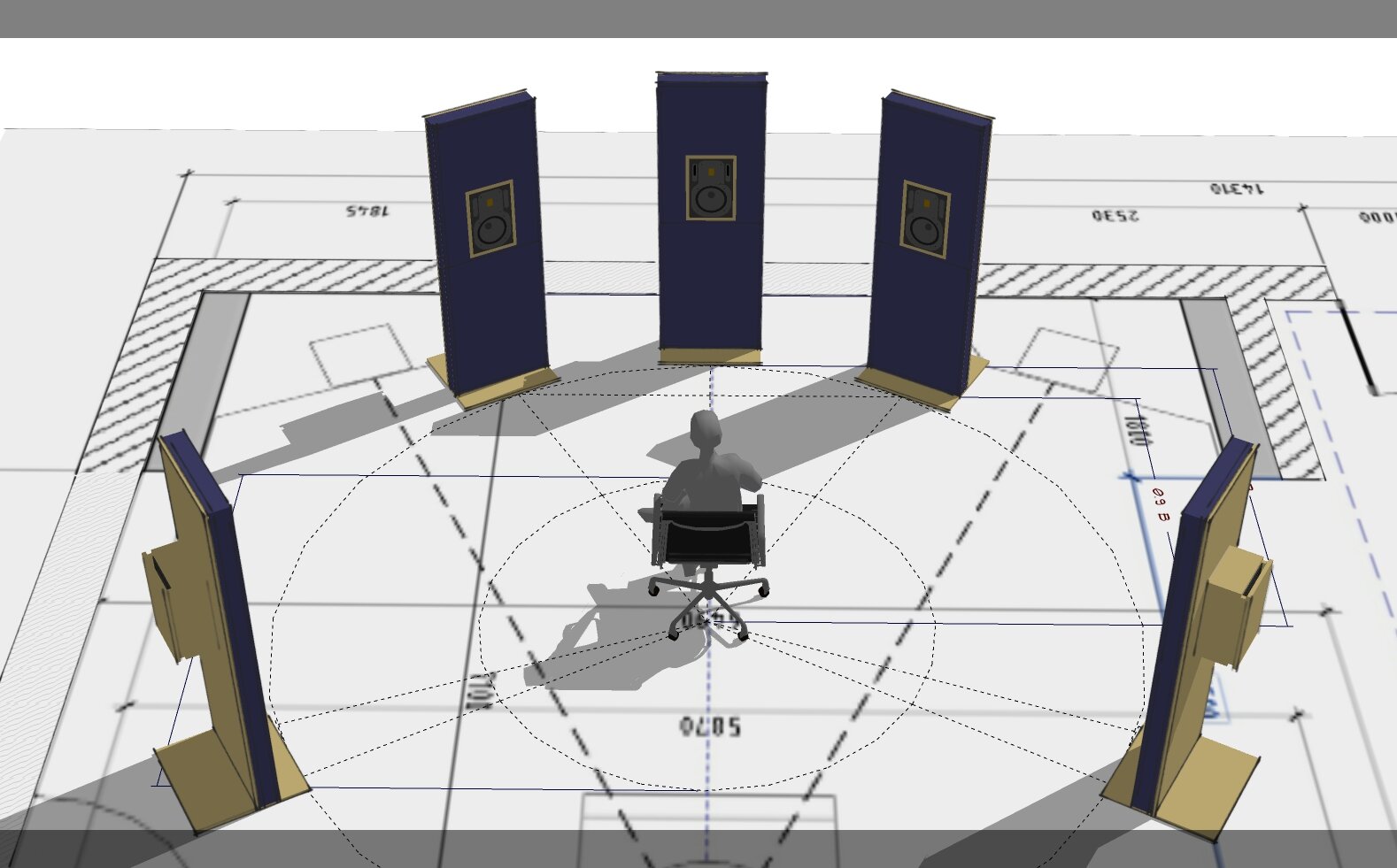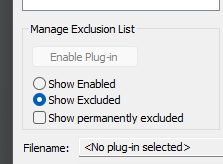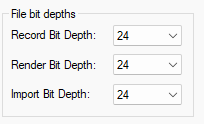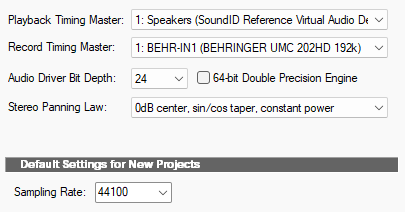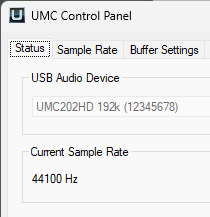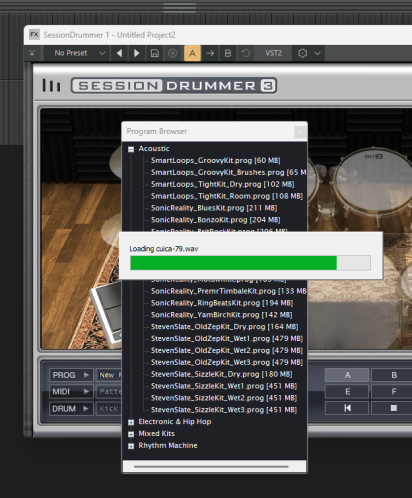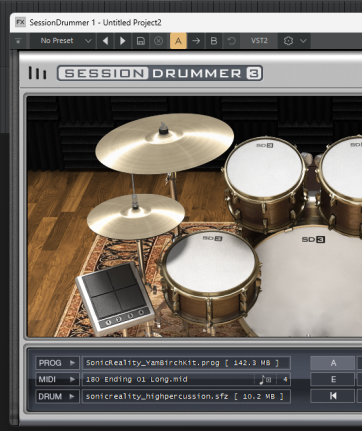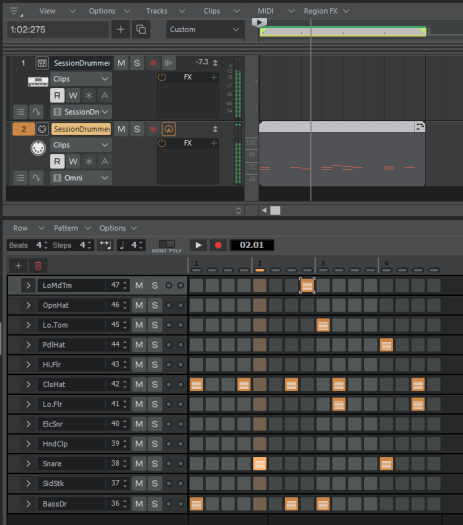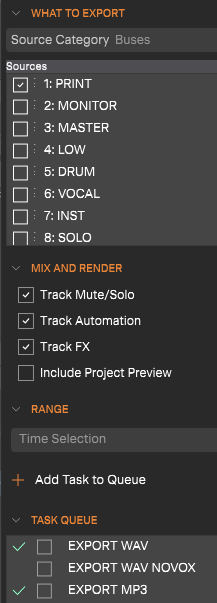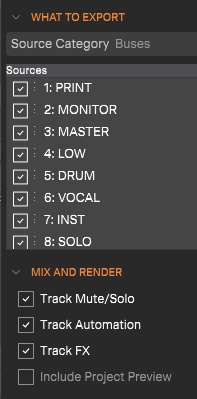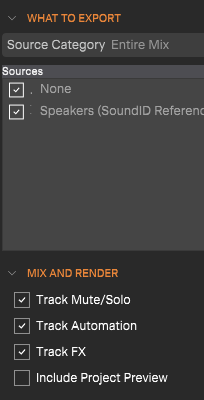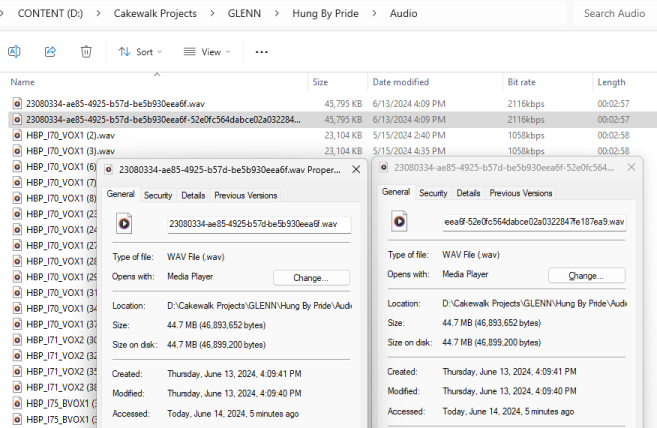-
Posts
2,297 -
Joined
-
Last visited
Everything posted by Glenn Stanton
-
so, in terms of the understanding established to some degree on this forum: SONAR (all caps) = SONAR and derivatives from pre-Bandlab days. Sonar (proper case) is the new DAW product from Cakewalk (a Bandlab brand). think of it as "case sensitive programming"
-

Recorded Audio (Saxophone) Playing Back at Least a Tone Lower than Played
Glenn Stanton replied to Stephen Power's question in Q&A
generally speaking - if you're doing sound library or video work - use 48K/24. while most modern same rate conversions can be fairly transparent, i'd go native just to avoid the extra work and any artifacts. -

Three Beatles songs merged but last one too loud!
Glenn Stanton replied to RICHARD HUTCHINS's topic in Cakewalk by BandLab
damn Beatles! always so loud are they! always making the girls scream they are! [your best yoda voice] -

Suddenly, new VSTs won't scan SOLVED!!
Glenn Stanton replied to Jerry Pettit's topic in Cakewalk by BandLab
-

Recorded Audio (Saxophone) Playing Back at Least a Tone Lower than Played
Glenn Stanton replied to Stephen Power's question in Q&A
and also keep in mind that ASIO4ALL works just fine - when you have everything else set correctly - and remove all those extra ASIO things from your system. -

Recorded Audio (Saxophone) Playing Back at Least a Tone Lower than Played
Glenn Stanton replied to Stephen Power's question in Q&A
an important step - decide which sample rate you want to work with - 44.1 or 48? (or some folks go 88.2 and 96). then make sure ALL of your Windows system settings, your ASIO, applications, etc settings are ALL using the same sample rate. this does a couple of nice things - one - all your apps now use the same sample rate so things won't mysterious be trying to flip around, and two - nevermind, there is no two. so check your Windows audio settings - both playback and record. in my system (being a dinosaur) i have them set to 44.1 (and 24-bit / 32-bit (not that i use 32-bit)). then my ASIO for the IO is set to 44.1 then my CW is set for, yep, 44.1 and 24-bit, and in the audio settings, i have 24-bit, 24-bit, and 24-bit. and voila! almost never a problem because all sample rates are aligned. now, that said, some products have proven problematic if they demand a different sample rate (like synths that are just so good they only will work with even # sample buffers and only 48K - or some only in 44.1K on rarer occasions where i do run 48K). but i have simply learned to avoid those products now... -
did you re-scan the plugins? i would be surprised the VST dll weren't also installed but maybe you just need the plugins refreshed.
-

temp[?] export files in audio folder
Glenn Stanton replied to Glenn Stanton's topic in Cakewalk by BandLab
that would explain it. the preview files only showed up the first time i exported from Sonar even though the boxes where unchecked. and now, checking after the same project and several other exports - no preview files. so that's the answer. still, it would be preferably to never exported them unless checked... ? -
yeah, my Alvarez K Yiari DY-85 is going to get the treatment next. just need to spend sometime to find the right parts...
-

Problem with the virtual drum kits
Glenn Stanton replied to David Leontieff-Smith's topic in Instruments & Effects
well without more details it will be tricky but for #1 -if you open session drummer and then select in the programs list, the kit, and it loads: then you should see the kit and related parts in the session drummer settings. this should be the kit you then hear if you use the MIDI track to play the kit, or using the step sequencer to write the MIDI, or import MIDI clips, etc. as far as why you are getting things out of sync - no idea without more details. -
nice! one thing i highly recommend, i put this on my 2003 MIM Strat - the zero fret ("zero glide") nut. really gets your action down and intonation is excellent now. i did a bit of filing on a couple of frets to get it just right. so even with old fingers, it easy to play and enjoy! https://www.stewmac.com/luthier-tools-and-supplies/materials/nuts-and-saddles/zero-glide-nuts/
-
if you got the Fender Squire tele, then you could afford the b-bender and some humbuckers too.... ?
-
John -- you gotta start charging more at the gigs to cover your winter hobbies ?
-

Does Anybody Know What Asset Files Are?
Glenn Stanton replied to Johnbee58's topic in Cakewalk by BandLab
i believe the asset files were something in a version of CbB and then in a subsequent version were no longer used. so some projects may have them. but as far as i could tell there was no detriment to removing the them. -
unfortunately LUNA is still just a beta on Windows, just ran the update today and now some things work better, but i suspect it will still be a while to stabilise for it to be fungible on Windows for more serious folks.
-
yes, and some other products, like several audio editors, do not respond well to improper vst3 plugin development. and it's easy to spot ? a bunch of the VST3 plugins with the new .vst3 folder extension work fine in CW, and a bunch don't.. then suddenly they work after an update from the vendor... dunno. i do know bugging the vendor (repeatedly if needed) seems to solve it in many cases...
-

temp[?] export files in audio folder
Glenn Stanton replied to Glenn Stanton's topic in Cakewalk by BandLab
so might be a bug - generating the files when the project preview is unchecked, in my example, in both the WAV and MP3 export settings. unless the preview files are generated regardless so the start screen function. one interesting thing - when i first open the dialog the preview box is grayed out. when i did a "recall settings" for each task, the box was then "available" - however - this only occurs by default on all source settings except entire mix. otherwise it's grayed out until you recall the task settings... so busses, tracks, clips etc exports the box is grayed out. makes sense if i'm exporting anything other than 2-tracks... -
it's because not all developers have correctly updated to the new Steinberg VST3 spec so some apps work fine and a bunch do not. so follow the advice from Outrage to remove the .vst3 on the folder and rescan, and bug the plugin company to fix it.
-

Setting up Cakewalk to record multiple tracks at one time
Glenn Stanton replied to Barry Wilkins's topic in Feedback Loop
no, in the box VI don't need an audio interface per se - but you likely want to hear things - so some interface even if it's only the built-in audio IO is needed for monitoring. for example in a recent project w/ 8 VI and 22 tracks (mostly drums) i simply arm all the audio output for those instruments and press record. sip some beverage and then it's done, disarm the tracks and voila! 22 audio tracks. -
and i would note wrt the "customers" - Bandlab didn't seem obligated to keep the older SONAR site and etc up and running - but did at their expense and presumably because yes, they were looking to keep the customer base as intact as possible - makes really good business sense. does anyone think Gibson would have kept the product site and forums going after they took the money and ran?
-
after doing an export last night, i found 2 uuid-like named files in the audio folder: 23080334-ae85-4925-b57d-be5b930eea6f.wav 23080334-ae85-4925-b57d-be5b930eea6f-52e0fc564dabce02a0322847fe187ea9.wav i exported a WAV file and an MP3 file. if i had to guess, these files are generated before creating the final destination file in the target export directory. when i listen to them, they appear to be identical to the exported mix, and the date time stamps are the same, and when i ran the export this morning the files show as "accessed" - presumably updated to reflect the last exported tasks this morning. Q: are these supposed to be cleaned up at the end of the export process? or are these tied to the export tasks (i.e. the internal task id is used to name these files) and they're preserved for subsequent task runs? Q: are these kept as part of the audio file collection if i make a copy of the project w/ copy files set on? meaning when i archive, will this come along, or they're only "known" to the export tasks?
-
i'll be trading in my Slate subscription which is also around $15/month. not really a hardship as i don't really use a lot of it anyways unless someone sends me a project with them already in it. so - 2 in the past 2 years? the VSX and microphone stuff are all perpetual so i'll be good. as far as a fixed price? i'd suggest $375USD new, or with any major release upgrade / cross-product at $199USD (so about every 2 years or when you trade in PS 6 / Mixcraft ? ) it's like people who lease automobiles or buy mass-transit subscriptions - steady fixed (hopefully) monthly outlays, so for a continuous development and maintenance, subscriptions help to fund that vs, a single payment with the expectation of ongoing long-term support.
-
if you've been doing anything with room measurement software (e.g. REW or ARC etc) you might be able to use REW to measure your headphone response and create a usable EQ curve to flatten it (something akin to what the soundid reference product does (and which i believe has a lot more supported headphones etc).
-
it took some hours before deciding to get the $104 membership on BL. but i waited a month before downloading the latest versions of Sonar and Next because of all the reports of major issues. then installed updated versions a few days ago. and now some reason the Softube FET compressor Pro Channel is now working... LOL. otherwise the Sonar has been rock solid even running projects i was getting a bit twitchy response on in CbB (a rare thing). we'll see how it progresses before i decide the stay or not, but for $104 for 8 months to try it out - not a big deal at the moment...
-

Percussion Voices added When only SI Electric Piano is wanted
Glenn Stanton replied to Tom11's topic in Instruments & Effects
simple way is to set the percussion track/instrument to some other MIDI channel. i like to set my MIDI tracks not in use to an external MIDI channel i'm not going to use and that reduces the chance i'll inadvertantly trigger it from another source, including an insutrments which might pass MIDI through.

